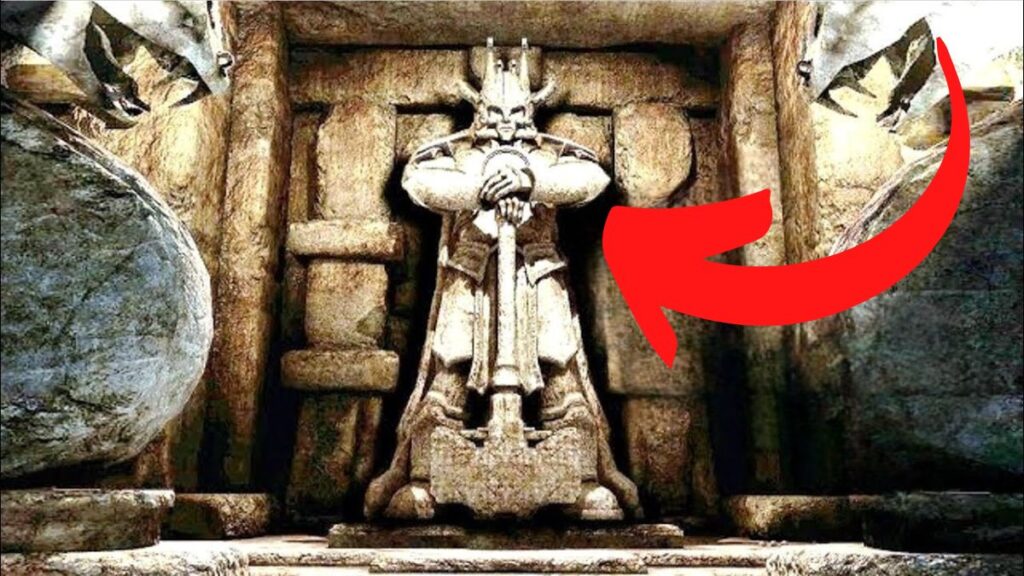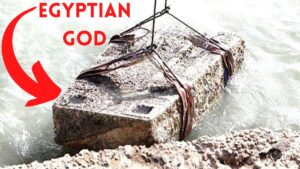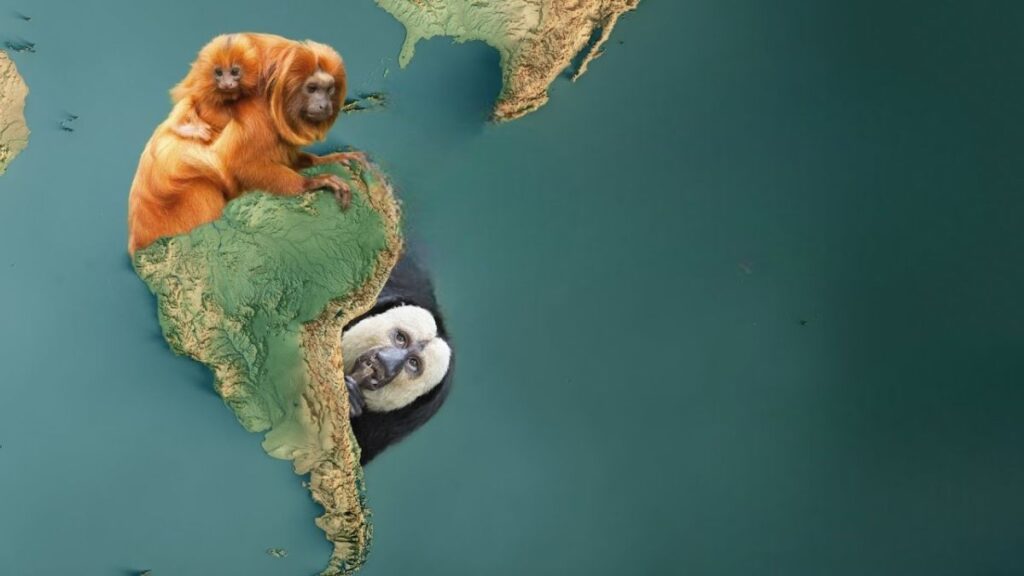
Archaeological news always takes us all over the world and through time, from the beginning of human history to the present day.
Discoveries made by archaeologists are fascinating because they reveal more about the lives of ancient humans.
Each discovery enriches our understanding of the past and leaves us wanting more.
Given the incredible accomplishments of the ancient people, there may be even more out there.
While some of the discoveries may just be of interest, others may hold the key to mankind’s future.
Despite this, archaeologists have recently discovered the god temple of Zeus which has stood undisturbed for thousands of years.
How significant is this discovery, and what mysteries do these ruins conceal?
Stay with us until the end as we discuss the most recent discoveries about the ancient human world.
An ancient greek city in Asia Minor that is now part of Turkey’s Aydin region was home to a great stadium, temples, and other artifacts; the gate to the Zeus temple was found in Turkey Magnesia. The gate of a Zeus temple, another of its ancient treasures, was recently made visible.
Turkish archeologists who have been digging magnesia for a really long time as of late rediscovered the sanctuary’s entryway, which was found during the 1890s by a german prehistorian who reburied quite a bit of what he found.
Another temple dedicated to the Greek goddess Artemis has already been discovered, and the location is not far from it.
As part of ongoing excavations carried out in the ortaklar region by associate professor Gorkem Kokdemir of Ankara University, the entrance gate to the Zeus temple was discovered.
“I have been chipping away at the magnesia unearthings beginning around 1998,” kokdemir told questioners.
Kokdemir claims that the valuable artifacts from the ancient Greek city of Magnesia were first discovered in the final years of the Ottoman Empire.
From 1891 to 1892, magnesia was excavated by German archaeologist Carl Humann, who also excavated Bergama and other cities in western Anatolia.
Kokdemir claims that humans were the first modern person to discover the temple of Zeus, but the majority of it was later reburied.
Kokdemir told interviewers, “he [spent] two years in Magnesia and [dug] up the Zeus temple, the one we rediscovered and is now in the news, in the agora, because of its architectural history, it is significant.
One of the earliest Hellenistic temples, it was built in the third century B.C., he said.
When humans excavated the ancient city of Magnesia, which is in what is now the province of Aydin in Turkey, he simply carted off a significant portion of what he found and gave it to the government of his own country, as was customary in the time.
Archaeologists at the time were very interested in these historical treasures.
Kokdemir mentioned that humans had brought around ten percent of the temple’s structure to Berlin and had exposed the temple’s structural components.
“He brought a lot of goods to Berlin, including sculptures, inscriptions, and pieces of the Zeus temple.
He asserts that visitors to the Berlin Pergamon Museum can view portions of the Zeus Temple that stand at an incredible 5 feet to 6 meters (18.37 feet) now.
He moans about the way that the construction of the sanctuary has been done with what he alludes to as “90% impersonation parts.
Kokdemir claims that the Zeus temple is not only one of the most important temples in the area but also one of the most sacred places in Magnesia.
“There is the sacred space for Artemis there, as well as a sacred agora, where the Zeus temple is located.
It has a significant impact; it is the second significant faction [of magnesia].
People in ancient cities worshipped multiple gods or goddesses rather than just one.
He clarified, “Artemis is the first god in Magnesia, and Zeus is the second.”
In order to complete what is still missing and reintroduce the temple to rigorous archaeological research, Kokdemir and his archaeological team are actively excavating what remains of the temple of Zeus, including its gate.
The magnesia excavation team expects to uncover sixty to seventy percent of the original components of the temple of Zeus.
They intend to begin the restoration of the temple by adding five-meter-tall pillars (16).
4 feet) and reconstructing the roof, making the structure a public landmark.
Out of all the ancient structures in Magnesia, the Artemis temple is the largest religious structure.
Kokdemir asserts that it is, after the Artemis temple at Ephesus, the fourth largest temple in Anatolia.
In the past, this was considered one of the world’s seven wonders.
Hermogenes’ masterpiece was the construction of the artemis temple.
As per kokdemir, one reason magnesia was so that’s what huge in antiquated greece was “in the third century bc, quite a while back, there were games coordinated that were what could be compared to the main games in the Mediterranean district, the Delphi apollo games.
Kokdemir went on to say that numerous sites in Magnesia still need to be found.
The Hippodrome, with its magnificent capacity of fifty thousand spectators, will be the next stop for archaeologists, despite the fact that he and his colleagues anticipate that, depending on funding, the temple of Zeus will be restored to its former splendor in a few years.
“we might need to sit tight for 15 to 20 years to totally encounter the astounding city that is magnesia, yet everything will work out,” he says energetically.
Even though Britain was on the outskirts of the ancient Roman empire, a gruesome relic suggests that the Romans fed their captives to lions, and executions appear to have been bloody spectacles.
Now that they have evidence, archaeologists believe that lions were occasionally used to kill terrified captives.
In 2016, archaeologists from the University of Leicester excavated the remains of a roman house. There, they found a sculpted bronze key handle that depicted a man fighting a frightful lion in front of four terrified teenagers.
The image suggests a public execution, according to a study that was published in the journal Britannia.
“When it was first discovered, it appeared to be the same bronze object as before, but after we carefully removed the soil, we surprisingly discovered several small faces looking back at us.
Gavin Speed, an archaeologist at Leicester University and a co-author of the study, said, “It was absolutely amazing.”
“In the Roman Empire, nothing quite like this has ever been discovered.
“The key handle named the minister’s thoroughfare key handle after where it was found, “enlightens the fierce person of a roman expert in this territory,” as per another coauthor, john Pearce of ruler’s school London.
Under Roman law, criminals and prisoners of war could be given to animals.
Although such incidents are well-documented at Rome’s Colosseum, this is the first evidence that the practice of slaughtering captives for the entertainment of the public with exotic animals reached Britain.
According to historians, Romans would have brought lions from Mesopotamia and North Africa to the empire’s farthest reaches by river boat, and wagon.
Nicholas Cooper, an archaeologist at Leicester University and the third author of the paper, stated, “that was slightly worse than being condemned to the mines, which is the other way that prisoners often met their end.”
With his long hair, bushy beard, and naked body, the man fighting the lion on the key handle is probably a barbarian.
The scene emphasizes the futility of battling the all-powerful empire by showing the approaching death of those who were conquered by the Romans.
Archaeologists believe it was built around 200 A.D., one hundred years after the Romans took control of Britain.
Additionally, a Roman-era theater, roadways, and mosaic floors have been discovered through excavations in Leicester.
According to Egypt’s supreme council of antiquities, which made the announcement via social media, archaeologists have discovered what may be the oldest beer brewery in the world. It was built for ancient Egyptian kings.
A team led by New York University’s Matthew Adams and Princeton University’s Deborah Vischak found the ancient brewery 280 miles south of Cairo.
The ruins are thought to be from the early first dynasty, when king Narmer, Egypt’s unifier, ruled from 3273 bc to 2987 bc.
Vischak provided the following explanation: “The brewery was located in a vast desert area that was exclusively reserved for the use of Egypt’s first kings, including Narmer.”
Each of the eight sections of the brewery site had a size of 65 feet by 8 feet and contained 40 large clay pots arranged in two rows.
A mixture of heated water and grain would have been contained in the containers during the fermentation process.
The industrial-sized facility could have produced up to 5,900 gallons at any given time.
“Evidence for the use of beer in sacrificial rites” was also discovered during the digs, according to Adams’ statement to the council.
“It’s possible that [the brewery] was built in this location specifically to supply the royal rituals that were taking place inside the funeral facilities of the kings of Egypt.
“Archaeologists have made significant strides in their efforts to identify the kinds of beers that ancient people produced.
In 2019, the Israel Antiquities Authority took yeast samples that were 5,000 years old and used them to brew beer and mead from containers that would have been used to make the same kind of beer that the Egyptians drank.
Egyptian sourdough bread has been attempted to be recreated using similar methods.
British archaeologists discovered the newly discovered brewery site at the beginning of the twentieth century, but it was not documented and its precise location was forgotten.
In the comments section, let us know what you think about these most recent archaeological finds and which one piqued your interest the most.
Explore:



![“[God DNA] Proves Presence of God” says Scientists God DNA](https://spaceupper.com/wp-content/uploads/2021/10/God-DNA-300x196.jpg)







